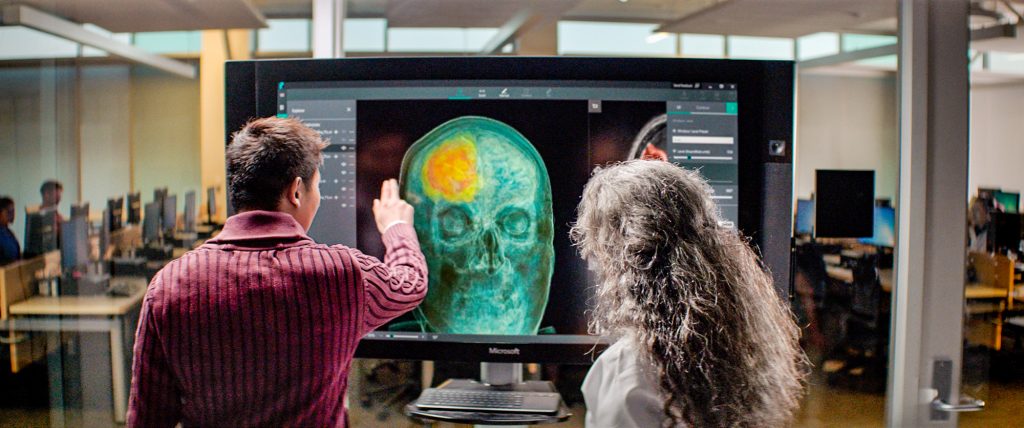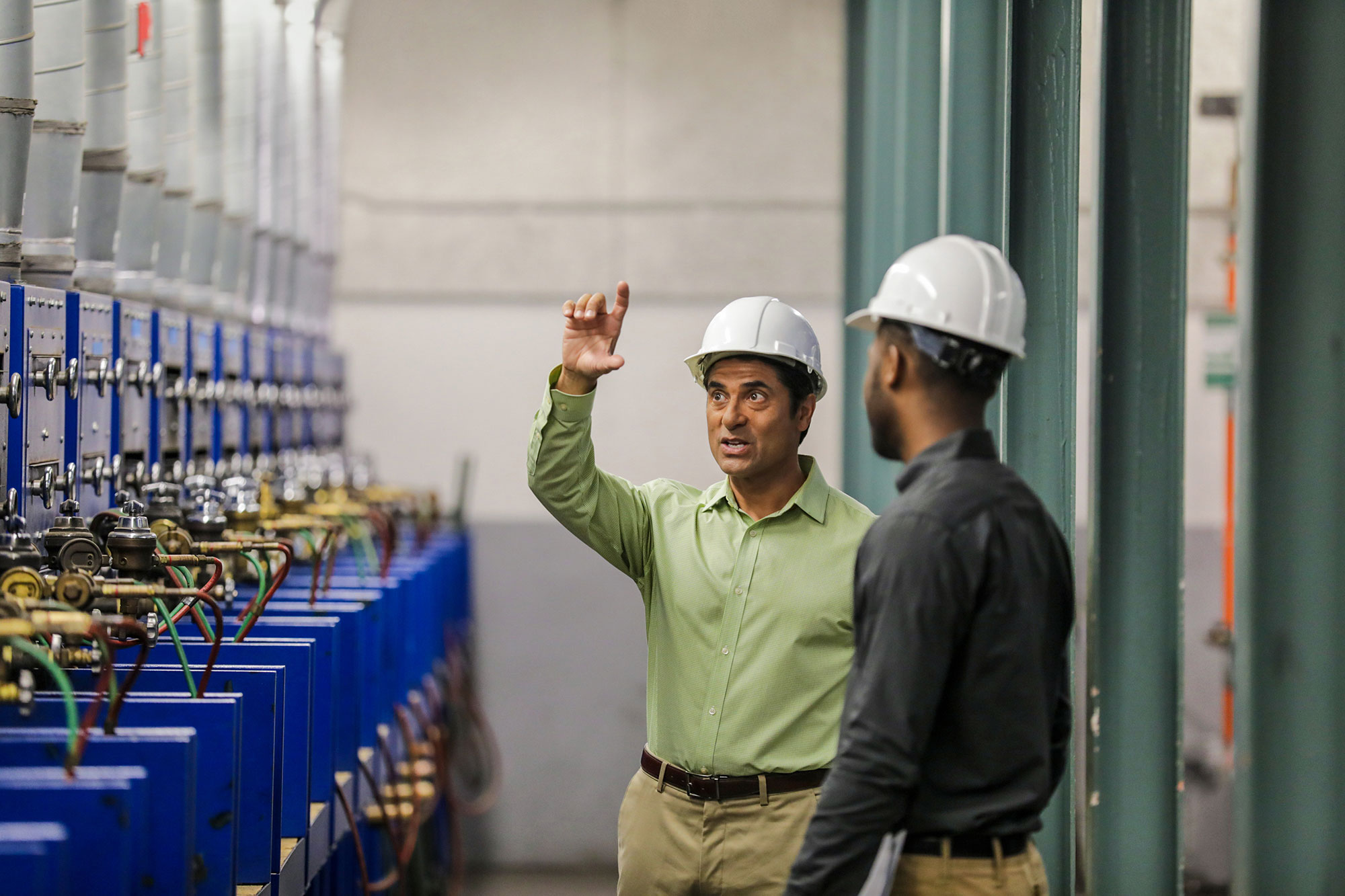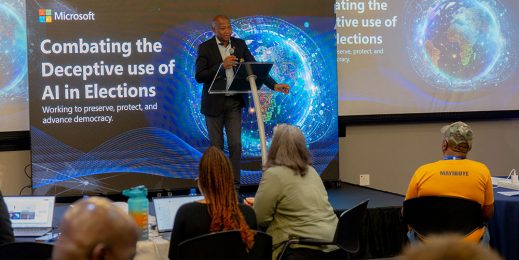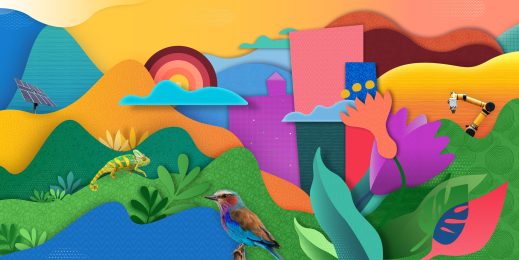
Jobs of the future
Cloudy with a forecast of opportunity
What does the workplace of the future look like?
Hospitals still stand, but where are the filing systems, the paper charts, the light boards for x-rays? Banks still operate but bots answer routine customer queries, and biometrics are used to access complete client profiles. Schools still function but classrooms are now paperless, lessons are delivered on smart devices and students log-in to lessons remotely.
This is not science fiction, but the very near future. In fact, many of these technologies are already transforming our workplaces.
With the advent of transformative technologies like cloud computing, automation and artificial intelligence (AI), our work environments are beginning to look very different.
In fact, the World Economic Forum (WEF) estimates that up to five million jobs could be lost to automation by 2020. Given this uncertainty, it’s not surprising that many people have fears about a future workplace that might leave them unemployed.
But, the future is bright, not bleak
These new technologies will not only make businesses more efficient while unlocking innovation and new solutions. Most importantly, they will also create new jobs. Gartner estimates that AI will generate 2.3 million new jobs while the IDC and Microsoft predict that cloud computing could potentially generate more than 14 million jobs across the globe in the next three years. This positivity is also reflected in the Global Shapers Study from WEF, which found that 80 percent of millennials believe technology is creating jobs, rather than destroying them.
So how do we begin to prepare for the new world of work? What skills are needed to future-proof our jobs, and how do we sustainably manage this transition towards the ‘Fourth Industrial Revolution’?

Digital literacy for digital encounters
Digital literacy is perhaps the most necessary competency for success in tomorrow’s workplace. This is the ability to work with, and extract information from, various digital platforms. These include online search, email and social media, as well as your typical daily-use software like word processing.
Being digitally literate is not only about being familiar with software, but also about applying a way of thinking to ‘digital encounters’. In the same way that regular literacy moves you from your ABCs to understanding a technical manual or writing a thesis, digital literacy is a spectrum from basic online search all the way up to mastering sophisticated data software. It’s a skill that is already essential for many professions today.
Teaching process, problem-solving and STEM
But it’s not enough to just teach digital literacy in schools. There are five essential skills you should also develop to be successful in the modern workplace. These are known as the five Cs: communication, collaboration, critical thinking, creativity and computational learning.
Children need to focus on problem solving and a certain way of thinking and operating, rather than only developing technical skills such as mastering a specific coding language or software. With technology advancing so quickly, it’s vital that young people learn to be agile and embrace change. These skills are essential for work in the 21st century and need to be instilled in young people at school level.
There must also be a renewed focus on teaching science, technology, engineering and maths (STEM). It’s predicted that by 2020, 80 percent of all future jobs will require STEM education. But the gap between the demand and supply of skilled job seekers in STEM fields threatens the ability of emerging economies to participate in the digital economy. Companies in the Middle East and Africa are already grappling with a lack of skilled employees, and over the next decade this STEM skills shortage will just get wider.
According to WEF, there will be strong demand for professionals in the Middle East and Africa who can blend digital and STEM skills with traditional subject expertise in the near future.
A variation of this is STEAM, which adds “arts” to the mix. But what is the value of the arts in a technological workplace? The STEAM movement reflects a recognition and appreciation for art as a fundamentally human output as well as for the associated skills that art inculcates: creativity, collaboration and lateral thinking.
For Lutz Ziob, dean of the Microsoft 4Afrika Academy, this represents a profound shift in the way we think about teaching – one they are working hard to instil in the academy.
“We have to change the act of learning and teaching itself. If you want someone to learn to ride a bike, we need to put them on a bike over and over, and in different situations,” explains Ziob.
“The same applies if you want someone to learn to be creative, they must have opportunities to demonstrate it. If you want them to collaborate, you can’t just have them passively listen. You have to invite them to collaborate and work together, otherwise they can’t build that muscle,” he adds.

Re-engineering education for the Class of 2030
However, while the global economy is rapidly moving towards embracing the fourth industrial revolution – an age characterised by innovation, advancement, and digital interventions – many of our educational institutions are struggling to progress at the pace of change needed to keep up.
We need to acknowledge that children starting school today will graduate from university courses that don’t yet exist, and they’ll pursue careers that are yet to be imagined. We call this group the Class of 2030.
To understand what kind of skills the class of 2030 will need and how we can best prepare them through their educational journey, Microsoft in partnership with McKinsey, listened to 70 global thought leaders around the world, reviewed 150 pieces of existing research and conducted a survey of over 2000 teachers and 2000 students across four countries.
The research found that 50 percent of students ranked social and emotional skills in their top five priorities. Employers are also placing a premium on social skills and emotional literacy with up to 40 percent of future jobs requiring explicit social and emotional skills.
Students were both clear and bold in their vision for the future. They want greater choice and control over how they learn so they can solve potential social and global challenges, and be ready to thrive in their personal and professional lives.

The research also found that by 2030 the fastest-growing occupations will require higher-level cognitive skills in areas such as collaboration, problem-solving, critical thinking, and creativity. To help all students build these crucial cognitive and social and emotional skills, educators will need training, technologies, and time.
Microsoft also recently participated in the BETT Middle East and Africa Leadership Summit in Abu Dhabi, where over 2500 education policy makers, leaders and experts from 50 countries came together to discuss how to equip young people to become the custodians of our planet now and in the future.
Increasingly, these experts realise that automation and digital transformation alone are not enough – that technologists and educators need to come together on new strategies for enhancing learning outcomes across the region. It’s not just what schools are teaching, but how they teach it.
School systems that prioritise rote learning through lectures that are essentially exercises in dictation and repetition produce graduates geared for a mechanised but simple and methodical workplace – a workplace that will soon disappear.
Thankfully, these methods are steadily being supplanted by more progressive ways of teaching including prioritising collaboration, interaction and soft-skills training.

Learning, unlearning, and relearning
Within the realm of hard skills, subject matter is changing rapidly, and the integration of technology into all jobs has become a given – even for non-technical jobs. This means we must become lifelong learners as a necessary condition of employability.
This is a belief echoed by Gail Shaw, technical lead at Microsoft partner company, Entelect. She says: “If you’re looking for a career in cloud or data for example, the main advice I have is ‘keep up’. This is a fast-moving field. We’re seeing new developments, new features, new products coming out almost daily and nobody is interested in using last year’s technology.”
Online training, including mass open online courses (MOOCs), or online universities that offer what are known as ‘nano’ or ‘micro’ degrees. These provide cost effective means to continue your own training. Some of these courses are offered through respected international institutions, and the bite-sized delivery format makes them more accessible for those already in full-time employment.

Future forecast? Cloudy but full of opportunity
While the future may be somewhat uncertain, one thing is for sure, cloud is the new normal.
However, there is a large shortage of skilled job candidates to fill the growing number of cloud jobs, and the Middle East and Africa is no exception. The region needs to tackle the challenges of an increasingly digital future, and a core part of these challenges is addressing the cloud skills gap among the youth.
This is why Microsoft Cloud Society exists. The programme offers training, certification opportunities, and face-to-face engagement opportunities to meet with Microsoft cloud experts. In this way, the Microsoft Cloud Society is one means for those already in technical fields to learn with the future in mind – and it speaks directly to the need to practice continued learning.
In just over a year, the Cloud Society programme has reached over 100,000 members and has revolutionised the way Microsoft approaches skills-building across the region.
Adapt to survive and thrive
To survive and thrive in the fourth industrial revolution, you must be constantly adapting unlearning traditional ways of doing things and learning new ones. Agility is vital. For the three billion-plus people in the workforce, it’s the people who have taken the initiative to diversify their knowledge and upgrade their skill sets who will be best positioned to succeed both now and in the future.











![A security team analyses key data from a visual dashboard.]](https://msftstories.thesourcemediaassets.com/sites/133/2023/04/Security-Sprint_TL_Banner-Image-519x260.jpg)




